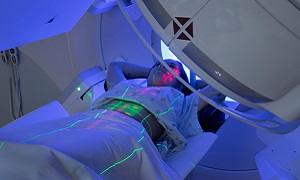Osteosarcoma
Osteosarcoma, which is also termed as osteogenic sarcoma, is a type of bone cancer. It occurs when the cells that grow new bone form a cancerous tumor. If the disease is diagnosed early, then treatment procedures such as surgery or chemo are successfully able to remove the tumor, before it can spread.
However, after the treatment is complete, lifelong monitoring is important to avoid any late side effects.
Anyone can have osteosarcoma, but it is generally the most common kind of bone cancer prevalent among children and teenagers. It occurs mostly among teenage boys.
Symptoms
Some of the signs and symptoms of the condition can include any of the following:
- Swelling or lumps around the bones or the ends of bones
- Pain at night
- Pain after exercise
- Bone or joint pain or soreness. This pain may come and go for months.
- Broken bones without a clear reason
- Limping
Although some limb pain and swelling are common among active and growing children, it is best to talk to your doctor if these signs do not go away in a couple of weeks, or if they worsen.
Causes & risk factors
What exactly causes osteosarcoma is not known. Doctors know this cancer forms when something goes wrong in one of the cells, that are responsible for making the new bone.
The condition generally begins when a healthy bone cell develops significant changes in its DNA. A cell’s DNA contains all the instructions telling it what to do. These changes tell the cell to start making new bone when it is not required. This results in a mass or a tumor of poorly formed bone cells that might invade and cause damage to healthy body tissue.
Some of these factors are known to increase the risk of osteosarcoma:
- Having undergone treatment previously with radiation treatment
- Other bone disorders, such as fibrous dysplasia or pagel’s disease
- Certain inherited or hereditary conditions
Diagnosis
A medical history and a physical exam
Imaging Tests
Biopsy
Treatment
Treatment is going to depend on several factors, including the tumor’s location, how fast it’s growing, and whether it has spread. Your age and overall health is also considered.
Treatment is the most effective when you start it before the cancer has spread beyond your bones to any other tissues or organs. People are generally able to find tumors early since they cause pain, swelling or a limp. It is best to let your doctor know about warning signs like these so that you can start treatment early.
Most people who are having osteosarcoma require surgery along with chemo. Some also choose to get radiation treatment.
Surgery
Limb-sparing surgery
Amputation
Rotationplasty
If your osteosarcoma is in your pelvis, jawbone, spine, or skull it may be difficult to completely remove it with surgery. Radiation treatment might also be required in addition. If the cancer spreads to your lungs or any other part of the body, your doctor will need to take out those tumors as well.
Chemo
This treatment method involves using strong drugs to kill the cancer cells as well as to stop their further growth. They are usually administered into your vein through an IV.
Doctors treat most osteosarcomas with chemo. The drugs help to shrink the tumor, which can help to make surgery easier, if it is required later. They are also able to get rid of small clusters of cancer cells that doctors might not see during medical scans.
Side effects generally include nausea and vomiting, diarrhea, along with a loss of appetite. Children generally have less severe side effects from this treatment as compared to adults, so they might receive higher doses of medication.
Radiation Treatment
In this method, high-energy X-rays are used to kill cancer cells.
Radiation doesn’t work as effectively on osteosarcoma cells as compared to other cancers.
However, your doctor might choose to use a procedure known as external beam radiation treatment if they are unable to remove all of the cancer through other methods.
Complications
Complications of osteosarcoma as well as its treatments can lead to the following side effects:
- Cancer that spreads- Osteosarcoma can spread from where the area where it started to other areas of the body, which makes treatment and recovery even more difficult. Osteosarcoma that spreads is mostly known to spread to the lungs and other bones.
- Adapting to limb amputation- Surgery that removes the tumor and spares the limb is used whenever it is possible. However, it might be necessary to remove part of the affected limb to remove the cancer. In such cases, an artificial limb or prosthesis will be required but it requires time, practice and patience.
- Long-term treatment side effects- The aggressive chemo which is required to control osteosarcoma can lead to substantial side effects, in the short term as well as in the long term. Your health care team can help you manage the side effects that occur during the treatment and provide you with a list of side effects to watch for in the years following your treatment.





